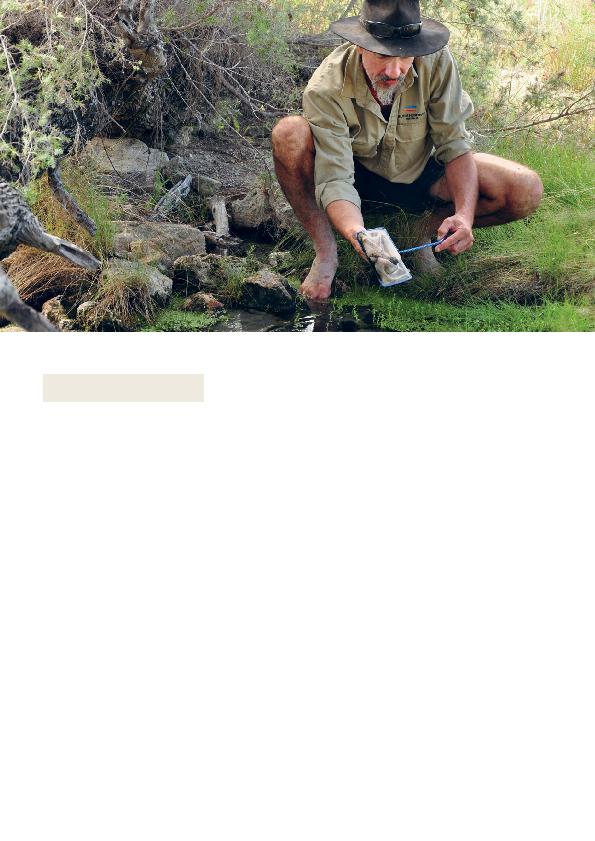
in understanding and managing threatened
ecosystems and species, developing
conservation business systems and
supporting others to apply the knowledge
we've gained.
Wunambal Gaambera country, WA
on Indigenous lands in Australia. The
plan in Australia to use the international
WGAC and Bush Heritage have now
established the `Uunguu Monitoring and
Evaluation Committee' to guide and review
aims to look after both biodiversity and
cultural values. The committee is made
up of traditional owner elders and rangers,
independent biologists, social scientists and
includes two Bush Heritage staff, Senior
Manager Philippa Walsh and Wunambal
Gaambera Healthy Country Manager Dr
Heritage employs and funds Dr Vigilante and
supports the implementation of the Healthy
Country Plan. The lessons learnt from the
development and implementation of this
plan will be shared with other Indigenous
groups across Australia and could also
benefit non-indigenous and government
land management agencies.
343 741 hectares of country and will soon
declare a further 488 877 hectares as Stage II.
Reserve, Qld
endangered fish that lives nowhere other
Qld. Bush Heritage aquatic ecologist, Dr
His initial three-year project had two goals:
to develop control methods for the exotic
invasive Gambusia (mosquito fish), which
are primarily responsible for the decline
of the red-finned blue-eye, and to relocate
red-finned blue-eye to new springs to expand
the population. This project produced
interesting results and considerable success.
springs but required successive treatments
and was labour intensive. The relocated
populations of red-finned blue-eye fared well
in most of the springs and there are now six
populations compared with the original four.
barriers around certain springs to prevent
re-colonisation by Gambusia. Two methods
have been trialed: erecting a silt fence (from
shadecloth-like material) and constructing
a large earthen barrier. The silt fence may
prove to be the best option. First steps are also
being taken to establish a captive `insurance'
population of the tiny fish. Meanwhile, the
species has been included in a book released
by the IUCN highlighting the plight of the
The Nature Conservancy's David Thomas Challenge
fish, Edgbaston Reserve, Qld.
Photograph by Annette Ruzicka